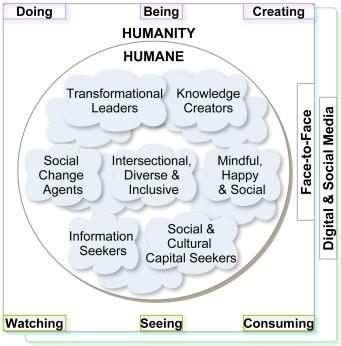Unlocking Success: The Critical Role of Mindfulness in Education
Introduction
In an increasingly fast-paced and demanding world, both educators and students face unprecedented challenges. Academic pressure, social responsibilities, and the digital ageS constant distractions can easily overwhelm even the brightest minds. Amidst this chaos, the practise of mindfulness in education is emerging as a powerful solution to enhance learning experiences, foster emotional intelligence, and unlock the true potential of students. In this in-depth article, we’ll dive into why mindfulness is becoming a cornerstone for educational success, explore its proven benefits, share actionable tips, and highlight inspiring real-life stories.
What is Mindfulness in Education?
Mindfulness refers to maintaining a moment-by-moment awareness of our thoughts, feelings, bodily sensations, and surrounding habitat. When introduced into education, mindfulness becomes a practical tool to bring attention and compassion to the learning process. It’s not about meditation alone but about nurturing presence, acceptance, and a non-judgmental attitude—skills as critical as academic knowledge.
Key aspects of mindfulness in education include:
- Paying focused attention to the present task
- Managing emotions and reactions consciously
- Reducing anxiety and stress to improve learning outcomes
- Building empathy, resilience, and social interaction skills
Why Mindfulness Matters in Schools
Today’s classrooms are dynamic spaces where students and teachers navigate complex cognitive, emotional, and social landscapes. Mindfulness in education offers a scientifically backed method to address these challenges head-on.Research consistently demonstrates that mindfulness enhances focus, supports emotional regulation, and even improves academic performance.
Critical reasons why mindfulness is essential in education:
- Student Well-being: Reduces symptoms of anxiety,depression,and burnout.
- Academic Success: Boosts cognitive adaptability, memory, and concentration.
- Classroom Environment: Promotes empathy,respect,and inclusion among students.
- teacher Resilience: Supports educators’ mental health, enhancing teaching quality and job satisfaction.
Benefits of Mindfulness for Students and Teachers
Integrating mindfulness practices across school curricula creates a ripple effect of positive outcomes for both students and educators.Here’s a closer look at the multifaceted benefits of mindfulness in the educational setting.
Student Benefits
- Improved Focus: Enhanced attention span and ability to concentrate on lessons.
- Reduced Test Anxiety: Tools to manage stress boost confidence and test performance.
- Emotional Regulation: Healthier responses to frustration, disappointment, or conflict.
- Boosted Social Skills: Better communication, empathy, and collaboration among peers.
- Self-awareness: Greater understanding of feelings, strengths, and areas for improvement.
Teacher Benefits
- Lower Stress Levels: Mindful routines support teacher well-being and burnout prevention.
- Classroom Management: Calm, centered teachers model positive behavior and resolve conflicts effectively.
- stronger Teacher-Student Relationships: Improved empathy fosters trust and engagement.
- Renewed Passion: Enhanced mindfulness rekindles motivation and job satisfaction.
How to Practice Mindfulness in the Classroom
cultivating a mindful classroom doesn’t require specialized equipment or extensive training. Simple activities and mindful moments can seamlessly fit into daily routines. Here are practical strategies for integrating mindfulness in education:
-
Mindful Breathing:
Begin or end each class with a few minutes of slow, deep breaths, focusing on the movement of the breath in the body.
-
Body scan Exercises:
Guide students in systematically paying attention to different parts of their bodies, noticing sensation and tension.
-
Gratitude Journals:
Encourage students to write down one or two things they are grateful for daily, fostering positivity and reflection.
-
“Mindful Moments”:
Integrate short pauses before tests or after recess for students to reset and refocus.
-
Mindful Listening:
Teach students to listen attentively to sounds in the environment, building auditory awareness and concentration.
-
Anchor Objects:
Introduce stress-relief tools like stones or soft toys as visual and tactile reminders to stay present.
Consistency is key. Even a few minutes each day can yield important benefits over time.
Case Studies: how Mindfulness Transforms Learning
Schools around the world are already witnessing transformative results by embedding mindfulness into their educational culture.
1. Inner Explorer Programme, United States
Schools implementing the Inner Explorer mindfulness program reported a 15% increase in reading and math scores, a 60% reduction in behavioral incidents, and improved classroom culture. Daily audio-guided mindfulness sessions empowered students to manage stress, leading to academic and social gains.
2. MindUP Curriculum, Canada & UK
Based on neuroscience and mindful awareness, the MindUP curriculum is being used by over 6,500 teachers. Studies found enhanced working memory, better emotion regulation, and reduced aggression in participating students. Mindfulness in education is fostering environments where learning thrives not despite, but because of, increased emotional awareness.
First-Hand Experiences from educators and Students
“As a high school science teacher,implementing five-minute mindful transitions between lessons has made a remarkable difference in my students’ engagement and emotional stability. Even my most anxious students participate actively and report feeling calmer.”
“We started a mindfulness club at school, and now it’s the highlight of my week! I used to dread tests, but learning breathing techniques has helped me stay cool and focused. My grades (and mood) have never been better!”
These testimonials illustrate a growing movement where mindfulness bridges the gap between academic and personal success.
Conclusion
From boosting academic performance to nurturing lifelong emotional skills, mindfulness in education is more than just a trend—it’s a game-changer. As the evidence mounts and personal stories inspire, it’s clear that creating mindful classrooms equips students and teachers alike to thrive in today’s complex world. By making space for mindfulness, educational institutions unlock the doors to resilience, empathy, and true educational success.
If you’re an educator, parent, or student, consider taking the first step—no matter how small—towards a more mindful approach to learning. The benefits, as research and experience prove, can be truly transformative.

